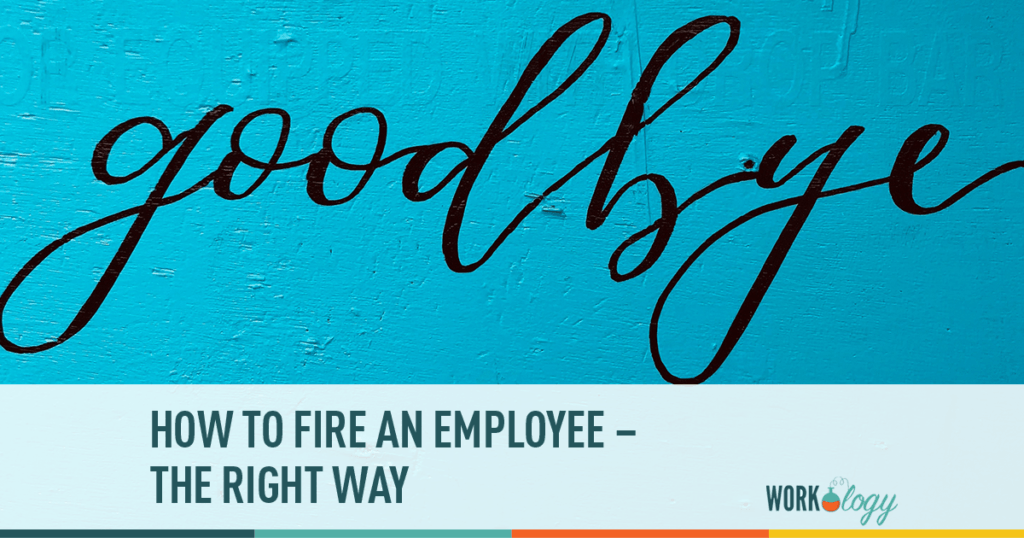How to Fire an Employee – The Right Way
Many persons view termination of an employee as “no big deal,” however nothing can be further from the truth. Most managers are not all too happy about the aspect of firing an employee due to the ill side-effects such an action may cause. For example, firing an employee may result in a) The employee suing the company (if inappropriately handled); or b) Create discord amongst other employees. This in effect can have a significant effect on levels of production. However, not to despair, if your employee presents a company liability there is a way to fire him or her that will have no profound effect on the productivity within your business’s infrastructure.
The first consideration in appropriately terminating the services of an employee is to make use of your company’s probationary period for employees who are new to the organization. This will make things considerably easier on you as hiring/firing manager. The probationary period is useful in that it provides staff managers with the advantage of terminating an individual shortly after the individual is hired. This is particularly beneficial if it is found early on that the person does not have the skills to effectively carry out the duties entailed within the position. However, in order to use the probationary status effectively, you must offer up evidence that you attempted to train the person. This also means you needn’t waste your time conducting several sessions where you tried to rehab the person into the model employee. Proving the person cannot perform the job as instructed will suffice.
Another way to terminate a person is when he or she exhibits gross misconduct. This is a no-brainer because such behavior is grounds for immediate dismissal. Examples of gross misconduct include: a) A person demonstrating violence and harm to other individuals in the workplace; b) The employee is caught in the act of thievery while on the job; and c) The person makes a threat towards staff and co-workers that is viewed as a security issue. In each of the preceding scenarios, you as hiring/firing manger have a clear reason why the employee must be terminated. You may state you have an obligation in terminating the individual since he or she presents a threat to the safety of his or her co-workers as well as the security of the organization. However, in order to fire the person immediately, make doubly certain you have good solid factual paperwork with respect to your reason(s) for the termination.
If you dismiss someone for any other reason, you must implement disciplinary action gradually. You will need to meet with the employee multiple times to discuss this termination. You must address the problem and adequately detail your expectations for the employee’s resolution. Both verbal and written warnings are considered to be warnings. Finally, a letter of termination and termination meeting are required if there has been no change in the employee’s behavior.
If your organization has a distinct department for handling employee concerns, you should make sure that they are thoroughly informed before any meeting regarding termination. Check the letter of termination with an HR representative to be sure you are adhering to protocol.
Have the HR representative who looked over your letter attend the termination meeting as well. It is the representative of human resources’ duty to observe the firing. Inform the worker up front why the meeting is necessary. It is not at all advisable to divert conversation from the current problem at hand at this time.
Utilize the letter of termination as a tool to help you carry out the firing appropriately. Give the employee a breakdown of what to expect after being let go and instructions on how to collect severance money. Ensure that every step of the meeting is carried out as professionally as possible.
Determine the kind of termination before letting an employee go. You might find value for the aforementioned examples in this regard. Next, adhere strictly to the rules established by your employer, keeping any emotion you may be feeling out of the situation. By adhering to these fundamental guidelines, you’ll be able to complete the termination process without running into any problems and without affecting overall productivity or business earnings.
Recommendation for Employee Scheduling Software
The author James F. is the founder of Fendza online employee scheduling software, and shamelessly plugs his personal recommendation to try out Fendza.
Fendza automatically creates perfect work schedules (with no time conflicts) by taking all those employee requests, their hours of availability, business needs, locations, etc. and doing all the plugging calculations for you; saving you hours of work and headaches. It even lets your employees login online and check their work schedules, submit employee requests, set their hours of availability, and much more.









